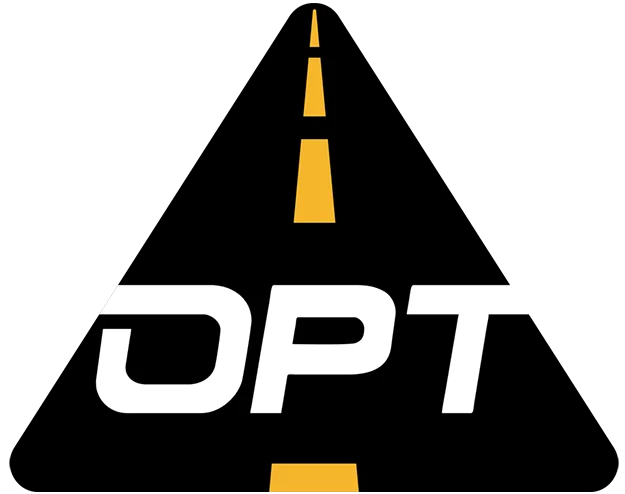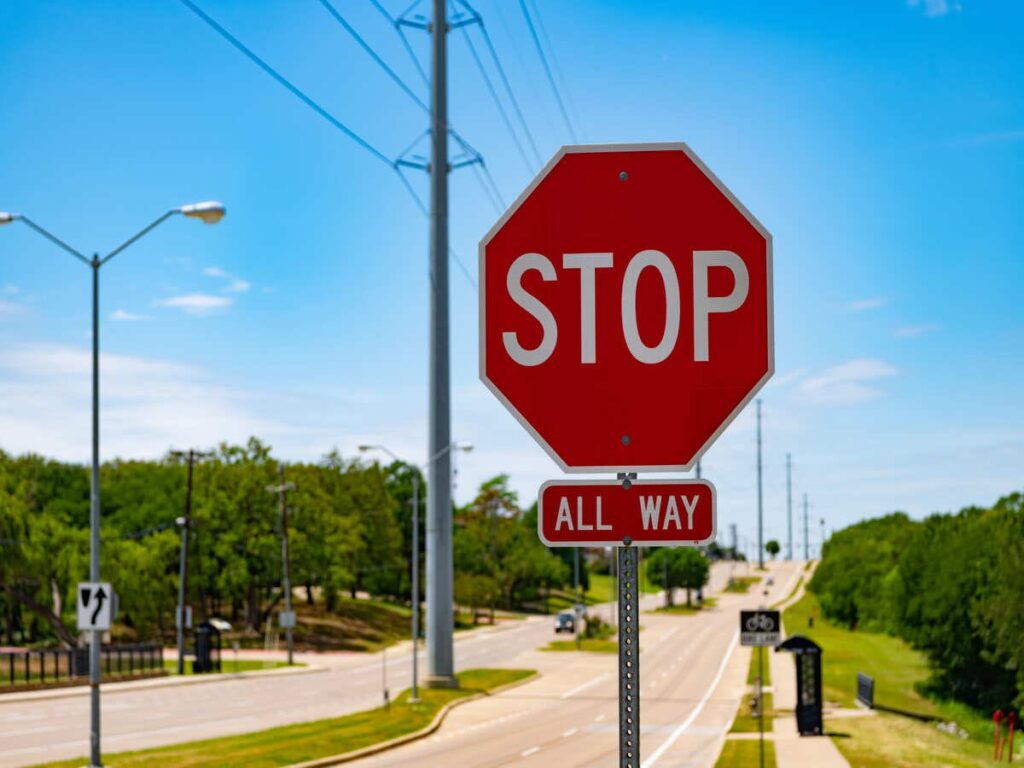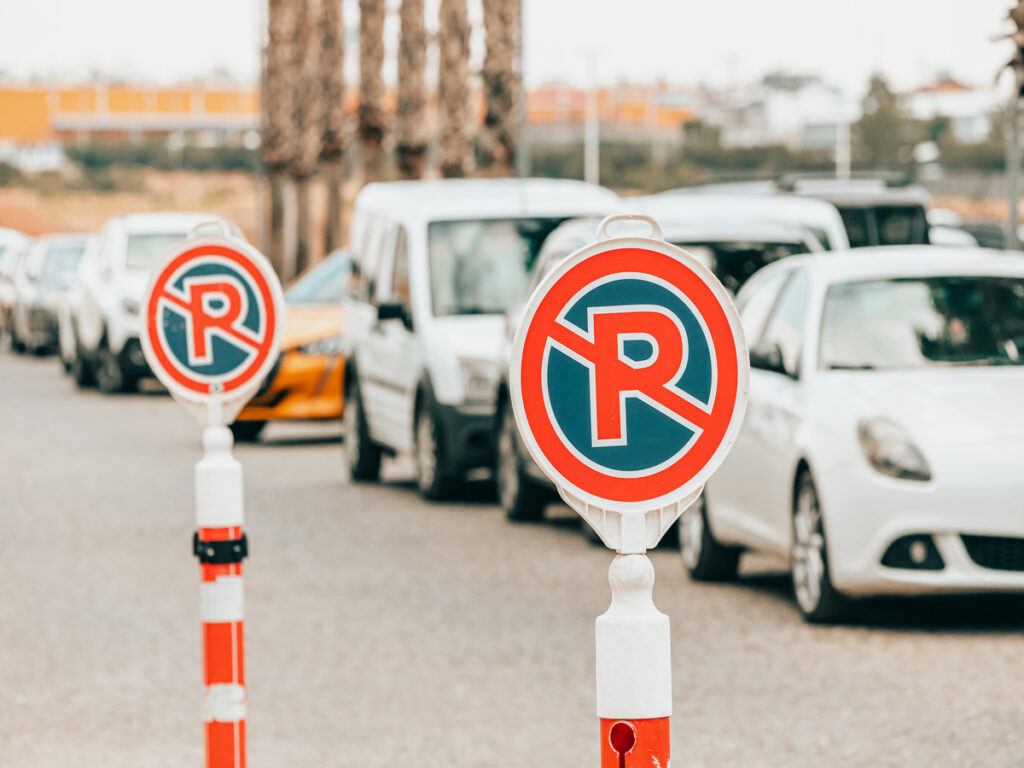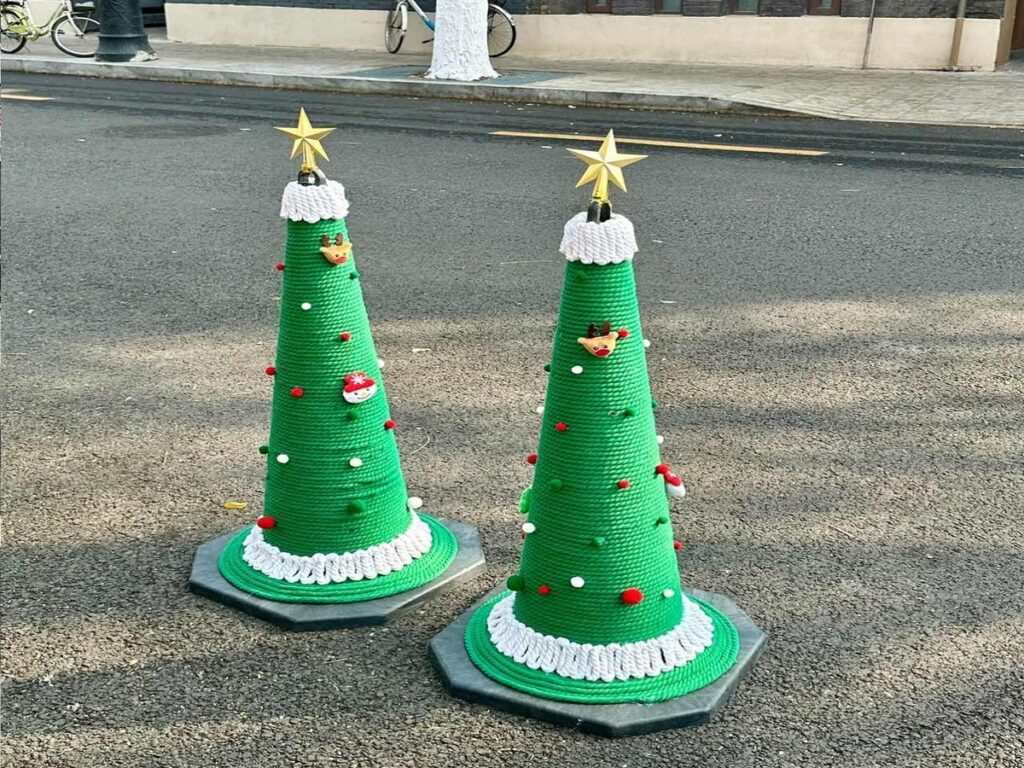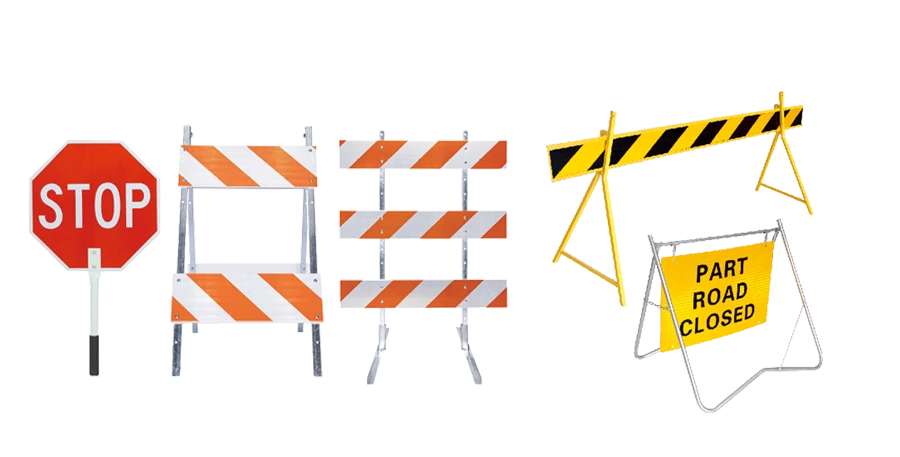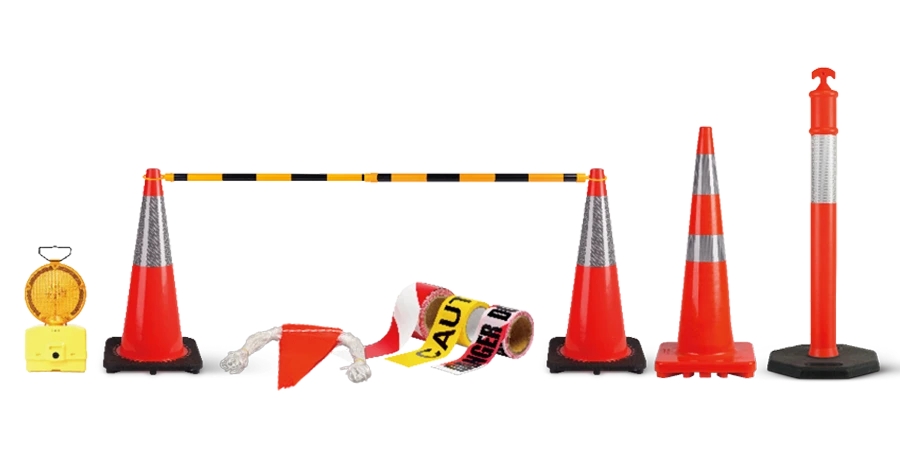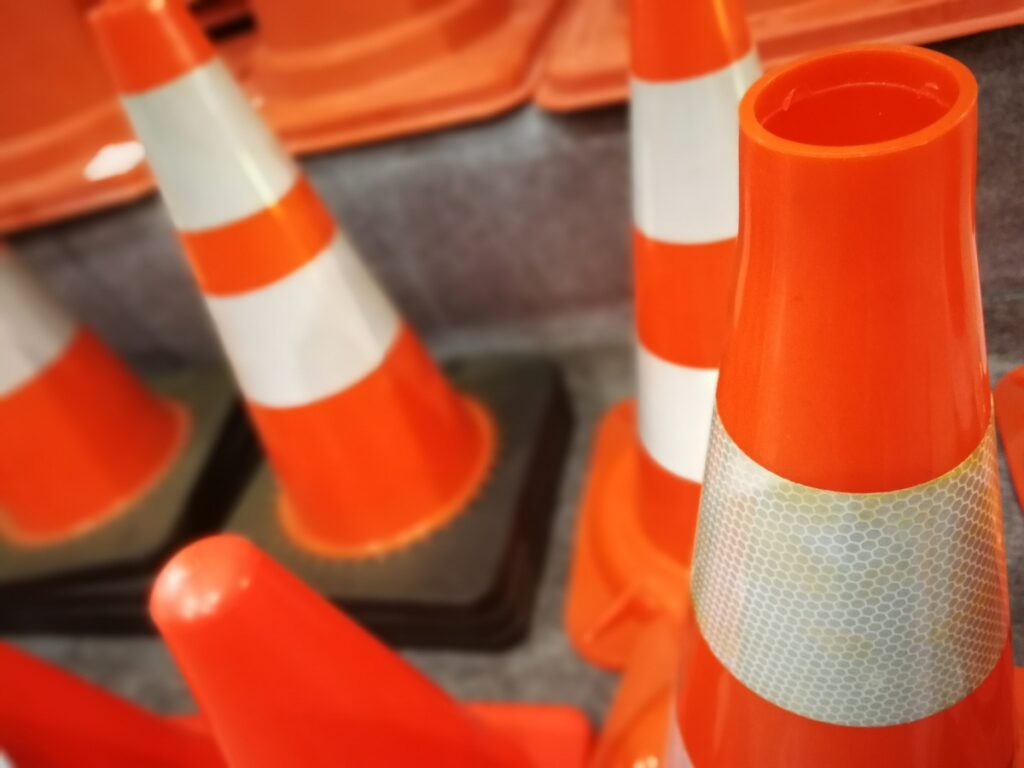
Os cones de trânsito são cruciais para manter a segurança nos locais de trabalho. Eles são amplamente utilizados em construção e controle de tráfego. No entanto, Os regulamentos em torno de seu uso diferem nos EUA, Canadá, e México. Essas variações podem afetar significativamente a segurança dos trabalhadores em projetos transfronteiriços. No México, Os cones são empregados em vários ambientes, incluindo construção, estacionamento, e emergências, enquanto os EUA e o Canadá usam principalmente cones para fins de construção e tráfego. Compreender essas diferenças é essencial para garantir a segurança e minimizar os riscos. A adesão aos regulamentos de cone de tráfego da OSHA e as leis locais é vital para gerenciamento eficaz de segurança e controle de tráfego.
Takeaways -chave
- Cones de trânsito mantêm as pessoas seguras nas áreas de construção e tráfego. Conhecendo as regras nos EUA, Canadá, E o México é importante para a segurança.
- Nos EUA, Osha diz que os cones devem ser 18 polegadas de altura em zonas lentas e 28 polegadas de altura em zonas rápidas. Fita reflexiva facilita a ver.
- Regras do Canadá, Chamado CSA Z96-15, Concentre -se em materiais fortes e bandas brilhantes. Isso ajuda os cones a se destacarem com mau tempo.
- O México usa regras nom, que também definem tamanhos de cone e refletividade. As regras podem mudar por área, Então aprenda o que se aplica onde você trabalha.
- Sempre compre cones de vendedores de confiança que seguem as regras de segurança. Isso evita multas e mantém os trabalhadores seguros.
- Ensine os trabalhadores como usar cones e seguir regras locais. O treinamento geralmente ajuda a evitar erros e mantém todos em segurança.
- Rótulos em três idiomas em cones ajudam a compartilhar mensagens de segurança. Isso funciona bem quando as pessoas falam idiomas diferentes.
- Verifique os cones frequentemente para garantir que eles atendam às regras de segurança. Mantenha registros de cheques e treinamento para passar as inspeções e manter a segurança.
O OSHA Traffic Cone Ruge nos EUA
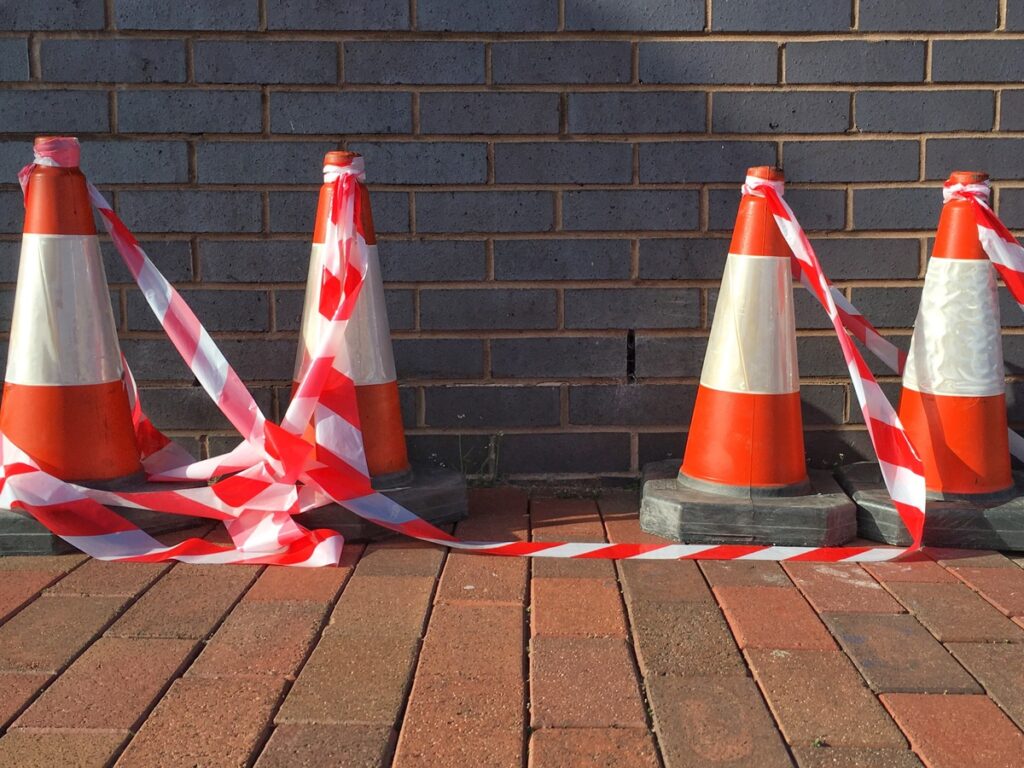
OSHA 1926 Regras
1926 As regras cobrem como usar cones de tráfego com segurança. Essas regras definem requisitos básicos para cones de trânsito nas áreas de trabalho. Os cones devem ser fortes, estável, e fácil de ver. Para áreas de baixa velocidade, Os cones de trânsito precisam ser pelo menos 18 polegadas de altura. Em zonas de alta velocidade, cones devem ser 28 polegadas de altura. Isso ajuda os cones a permanecer visíveis em lugares diferentes.
OSHA Também diz que os cones precisam de materiais refletivos para áreas noturnas ou escuras. Isso os torna mais fáceis de ver e reduzir os riscos de acidentes. Os cones devem ser espaçados corretamente para orientar o tráfego e manter os trabalhadores seguros. Seguindo as regras da OSHA mantém sua zona de trabalho segura e legal.
Diretrizes ANSI e sua importância
O Instituto Nacional Americano de Padrões (Ansi) Adiciona regras extras para ajudar a OSHA. Ansi se concentra em melhorar os cones para áreas de trabalho. Eles sugerem o uso de cones feitos de materiais difíceis que lidam com o mau tempo e os impactos.
ANSI também destaca a necessidade de chapa reflexiva. Isso inclui folhas básicas para tráfego leve, Felas mais fortes para áreas movimentadas, e folhas de primeira qualidade para pontos de segurança críticos. Usar as regras da ANSI torna os cones mais visíveis e duráveis, protegendo os trabalhadores e motoristas melhor.
Necessidades reflexivas e de visibilidade
Ver cones reflexivos claramente é muito importante. OSHA e ANSI requerem materiais reflexivos para uso diurno e noturno. O Manual sobre Dispositivos Uniformes de Controle de Tráfego (MUTCD) fornece regras detalhadas para design de cone e uso. Requer folhas reflexivas para tornar os cones reflexivos visíveis em condições sombrias.
Aqui está uma visão simples das opções reflexivas para cones:
| Tipo padrão | Descrição |
|---|---|
| Padrão ASTM | Define regras para chapa reflexiva para melhorar a visibilidade. |
| Manual sobre Dispositivos Uniformes de Controle de Tráfego (MUTCD) | Fornece regras de design e uso para cones reflexivos para garantir a visibilidade. |
| Especificação para vários cones de tráfego | Lista as necessidades materiais e de inspeção de cones refletivos de tráfego. |
- Folhas de grau de engenharia: Funciona para áreas de tráfego leve.
- Folha prismática de alta intensidade: Melhor para zonas de tráfego ocupadas.
- Folha de grau de diamante: Dá a melhor visibilidade para pontos de segurança críticos.
Escolher o material reflexivo certo ajuda a atender às regras da OSHA. Também melhora a segurança nas zonas de trabalho. Boa visibilidade reduz os acidentes e segue as regras federais.
Para obter mais informações sobre os regulamentos de cone de tráfego da OSHA, Não hesite em conferir “Guia completo para regulamentos e conformidade do cone de tráfego da OSHA” e mantenha -se informado para manter seu ambiente de trabalho mais seguro!
Aplicações de zona de trabalho
Os cones de trânsito são importantes para manter as zonas de trabalho seguras. Eles ajudam a controlar o tráfego, proteger os trabalhadores, e guiar as pessoas que passam por. Osha quer que os cones de trabalho usados corretamente para diminuir os riscos e manter as coisas organizadas. Seguindo as regras da OSHA, As zonas de trabalho podem ser mais seguras para todos.
Em rodovias, Os cones de rodovias guiam os carros em torno do trabalho de estrada com segurança. Isso ajuda a evitar engarrafamentos e acidentes. Para reparos nas estradas, Cones de estrada mostram faixas fechadas, Ajudando os motoristas a se mover facilmente. Nas cidades, Os cones de segurança de trânsito criam caminhos seguros para os caminhantes, mantendo o tráfego suave. As áreas de trabalho utilitárias usam cones de trabalho para bloquear pontos perigosos e interromper lesões.
Os cones não são apenas para construção. Em eventos, Segurança Cones Direct Cars, reduzindo o tráfego e tornando as coisas mais seguras. As equipes de emergência usam cones de segurança para marcar zonas seguras em torno de acidentes, protegendo todos por perto. Em sites de trabalho, Cones de segurança mostram caminhos de veículo, diminuindo os riscos de colisão.
Para fazer com que os cones de segurança funcionem melhor, Use -os com sinais de zona de trabalho. As placas dão detalhes extras para que motoristas e caminhantes saibam o que os cones significam. Cones reflexivos são mais fáceis de ver à noite ou com luz fraca. OSHA diz que os cones de segurança devem atender a certas regras de altura e refletividade com base na velocidade e tipo de tráfego.
Novas idéias também tornam as zonas de trabalho mais seguras. Treinamento de realidade virtual, Como C2 Smart, Ensina os trabalhadores como usar bem os cones de segurança. Os sistemas inteligentes misturam tecnologia com ferramentas de segurança para corrigir problemas da zona de trabalho. Essas atualizações ajudam a seguir as regras da OSHA e melhorar a segurança.
Usando cones de segurança da maneira certa mantém as zonas de trabalho limpas e seguras. Seguir as regras da OSHA garantem que os cones de segurança sejam visíveis e fortes. Seja para construção, trabalho na estrada, ou eventos, Os cones de segurança são essenciais para a segurança e o pedido.
Padrões de cone de trânsito no Canadá
Visão geral do CSA Z96-15
No Canadá, As regras do cone de trânsito vêm do CSA Z96-15 Padrão. Este padrão ajuda a manter os trabalhadores seguros e o tráfego organizado. Explica como os cones devem ser feitos, seu tamanho, e materiais. Essas regras tornam os cones mais fortes e fáceis de ver, Mesmo com mau tempo.
O CSA Z96-15 também se concentra em materiais reflexivos. Esses materiais tornam os cones visíveis durante o dia e a noite. Seguir este padrão garante que seus cones sejam seguros para Áreas de trabalho canadenses.
Material reflexivo e padrões de visibilidade
Ver cones de tráfego claramente é muito importante para a segurança. A CSA Z96-15 diz que os cones devem ter bons materiais reflexivos. Esses materiais ajudam os cones a se destacar no escuro ou na chuva. Escolha cones com bandas reflexivas que atendam a essas regras para melhor segurança.
As bandas reflexivas devem cobrir uma certa parte do cone. Isso ajuda motoristas e caminhantes a perceber cones de longe. Cores brilhantes como laranja ou vermelho também facilitam a visão de cones à luz do dia. O uso de cones que seguem estas regras reduz os acidentes e mantém todos mais seguros.
Aplicações mais amplas além das zonas de trabalho
No Canadá, Os cones de trabalho são usados para mais do que construção. Eles são úteis em eventos, Estacionamentos, e emergências. Seus muitos usos os tornam importantes para a segurança em diferentes lugares.
Em eventos, Cones orientam carros e criam caminhos seguros para as pessoas. Em estacionamentos, Eles mostram manchas reservadas ou carros diretos para estacionar. As equipes de emergência usam cones para bloquear zonas de perigo e proteger as pessoas.
O CSA Z96-15 garante que os cones de trabalho nessas situações sejam seguros e visíveis. O uso de cones que seguem essas regras mantém as coisas organizadas e protege a todos em vários ambientes.
Mecanismos de aplicação no Canadá
O Canadá usa regras federais e provinciais para aplicar os padrões de Cone. Saber essas regras é fundamental para trabalhar com segurança no Canadá. O Associação de padrões canadenses (CSA) Cria regras de segurança como o CSA Z96-15 para cones. Províncias e territórios podem adicionar suas próprias regras a estes.
Cada província tem suas próprias leis de segurança para locais de trabalho. Essas leis correspondem às regras da CSA, mas podem ter etapas extras. Em Ontário, O Ministério do Trabalho verifica se os cones atenderem às regras de tamanho e refletividade. Quebrar essas regras pode causar multas ou desacelerar projetos.
Em Quebec, Cness Garante que as regras de segurança do local de trabalho sejam seguidas. Cones em Quebec devem atender ao padrão CSA Z96-15. Se não, Você pode enfrentar penalidades ou paradas de trabalho. Colúmbia Britânica e Alberta também têm grupos que verificam práticas de segurança.
As agências federais também verificam a segurança em terras federais ou rodovias. O Código de Trabalho do Canadá inclui regras da CSA para segurança. Os inspetores federais podem visitar para garantir que seu projeto siga estas regras.
Para evitar problemas, Verifique seu equipamento de segurança frequentemente. Trabalhe com fornecedores que vendem cones aprovados pela CSA. Ensine sua equipe sobre regras de segurança locais para permanecer em conformidade. O uso de cones de trabalho que atendem às regras de CSA e OSHA ajudam em projetos transfronteiriços.
A aplicação do Canadá se concentra em manter os trabalhadores e o público seguro. Seguindo estas regras, Seu projeto pode permanecer seguro e correr sem problemas.
Padrões de cone de trânsito no México
Visão geral dos padrões NOM
No México, As regras do cone de trânsito seguem Nom (Padrões oficiais mexicanos). Essas regras garantem que os cones sejam seguros e fáceis de ver. O NOM se concentra Materiais de cone de trabalho, projeto, e refletividade para usos diferentes. Essas regras se aplicam aos canteiros de obras, estradas, e emergências.
Os padrões de NOM exigem materiais fortes que lidam com o mau tempo. Os cones devem ser cores brilhantes como laranja ou vermelho para visibilidade diurna. Bandas reflexivas são necessárias para tornar os cones de trabalho visíveis à noite ou com luz fraca. Seguir essas regras ajuda a manter as áreas de trabalho seguras e reduz os riscos.
Requisitos de tamanho e refletividade
Cones de trânsito no México devem atender às regras de tamanho e refletividade. A altura do cone depende de onde eles são usados. Em áreas de velocidade lenta, Os cones de trânsito devem ser pelo menos 18 polegadas de altura. Para zonas de velocidade rápida, Os cones de trânsito precisam ser 28 polegadas ou mais altas para ficar visível.
A refletividade é essencial para a segurança, especialmente à noite. Nom diz que os cones reflexivos devem ter bandas reflexivas cobrindo grande parte de sua superfície. Essas bandas ajudam motoristas e caminhantes a ver cones refletivos de longe. O uso de cones reflexivos com bons materiais reflexivos atende regras e mantém todos mais seguros.
Variações regionais na aplicação
Regiões diferentes do México impõem as regras do Cone de maneira diferente. Algumas áreas verificam as regras do NOM estritamente, enquanto outros estão mais relaxados. Aprenda as regras para a localização do seu projeto para evitar problemas.
As autoridades locais inspecionam cones para o tamanho, cor, e refletividade. Quebrar regras pode levar a multas ou atrasos. Para seguir as regras, Compre cones que atendem aos padrões NOM. Verifique os cones frequentemente para garantir que estejam em boa forma e visíveis. Conhecer a aplicação local ajuda você a se manter seguro e evitar penalidades.
Desafios no fornecimento de cones compatíveis
Obtendo cones de trânsito que se seguem padrões regulatórios pode ser complicado. Isso é especialmente verdadeiro para Projetos transfronteiriços. No México, O problema é ainda mais difícil devido a problemas locais. Saber esses problemas é importante para manter seu projeto seguro.
Um grande problema é encontrar os materiais certos. Coisas como polivinil e termofios são necessários para fazer cones fortes. Esses materiais geralmente são difíceis de encontrar no México. Isso torna os cones mais caros de produzir e mais difíceis de obter. Alguns fornecedores usam mais barato, materiais mais fracos. Esses cones não atendem às regras de segurança e podem ser perigosos. Eles podem custar menos no início, mas podem causar acidentes ou multas posteriormente.
Outra questão é o número de cones que não se encontram Padrões NOM. Esses cones geralmente são muito pequenos, não reflexivo, ou quebrar facilmente. Eles são mais baratos, Então as pessoas os compram, Mas eles são arriscados. O uso desses cones pode levar a penalidades, atrasos, ou acidentes. Sempre verifique cuidadosamente ao comprar cones para evitar esses problemas.
Dica: Verifique se os cones do seu fornecedor são certificados. Verifique se eles se encontram Padrões NOM para tamanho, refletividade, e qualidade do material.
Diferentes áreas no México aplicam as regras de maneira diferente. Alguns lugares são rigorosos sobre Regulamentos de NOM, enquanto outros não são. Isso torna confuso saber quais cones são bons de usar. Aprenda as regras para a localização do seu projeto. Converse com autoridades ou especialistas locais para permanecer no caminho certo.
Fazer cones de trabalho que atendem a todas as regras de segurança também são difíceis para os fabricantes. Eles precisam de melhores materiais e ferramentas avançadas, o que custou mais. Isso dificulta o trabalho dos cones de um bom trabalho para pagar pequenos projetos ou empresas com orçamentos apertados.
Para resolver esses problemas, Trabalhe com fornecedores de confiança que se concentram em cones compatíveis. Verifique seus cones de trabalho frequentemente para garantir que eles ainda estejam seguros e visíveis. Fazendo isso, Você pode evitar riscos e manter suas zonas de trabalho seguras.
Principais diferenças e comparações entre os EUA, Canadá, e México
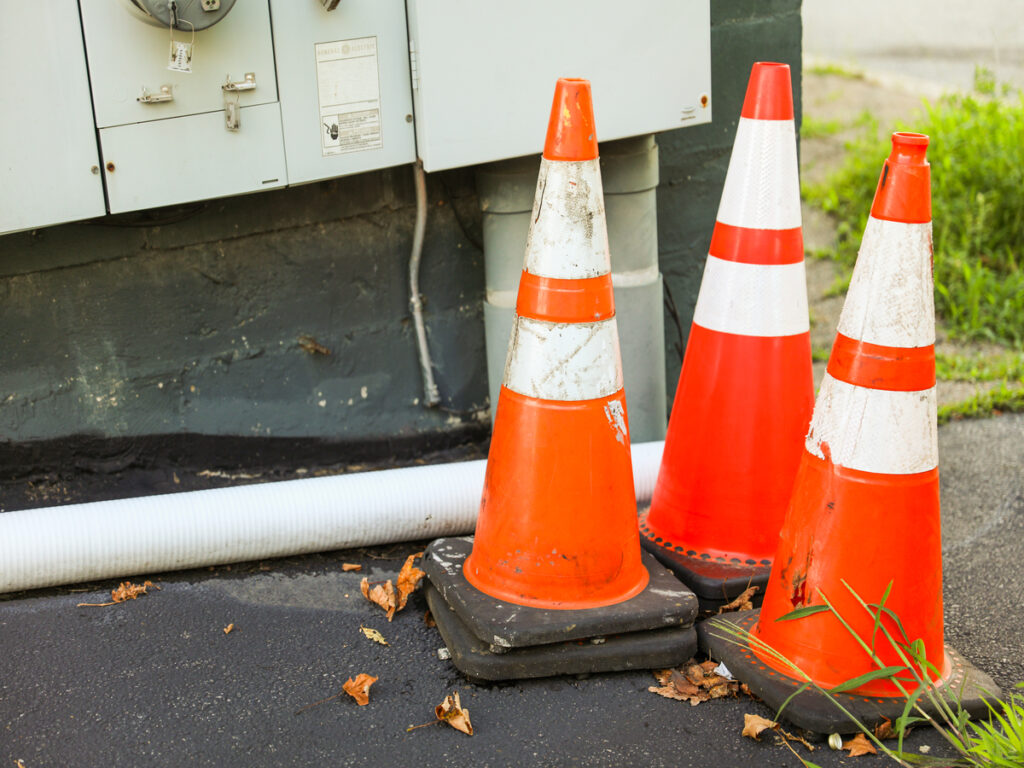
Requisitos de tamanho e altura
O tamanho do cone de tráfego é importante para manter as zonas de trabalho seguras. Nos EUA, A altura do cone de tráfego depende da velocidade de tráfego. Para tráfego mais lento, Os cones de trânsito devem ser pelo menos 18 polegadas de altura. Em áreas mais rápidas, Os cones precisam ser 28 polegadas ou mais altas. Essas regras ajudam os cones de tráfego a permanecer visíveis para motoristas e caminhantes.
No Canadá, O padrão CSA Z96-15 possui regras de altura semelhantes. Os cones canadenses geralmente têm bases mais amplas para melhor estabilidade. Isso os ajuda a permanecer no lugar durante o mau tempo. O design também melhora a segurança dos trabalhadores e do controle de tráfego.
O México usa padrões nom, que também define regras de altura. Cones em áreas lentas devem ser pelo menos 18 polegadas de altura. Em zonas rápidas, Os cones precisam ser mais altos. Mas, A aplicação pode variar por região. Sempre verifique as regras locais para garantir que você as siga.
Padrões de refletividade e visibilidade
Boa visibilidade é essencial para a segurança nas zonas de trabalho. Nos EUA, OSHA e ANSI exigem que os cones tenham materiais reflexivos. Esses materiais tornam os cones mais fáceis de ver com pouca luz. O MUTCD fornece regras detalhadas para chapa reflexiva. Opções como grau de engenharia, alta intensidade, e as folhas de grau de diamante melhoram a visibilidade com base nas necessidades de tráfego.
O padrão CSA Z96-15 do Canadá requer bandas reflexivas em cones. Essas bandas cobrem grande parte do cone para uma melhor visibilidade. Cores brilhantes como laranja ou vermelho também ajudam os cones a se destacarem em diferentes iluminação.
No México, Os padrões NOM exigem que os cones tenham bandas reflexivas para uso noturno. Mas encontrar cones com bons materiais reflexivos pode ser difícil. Trabalhe com fornecedores confiáveis para obter cones que atendam às regras de visibilidade.
Escopo de aplicação
Os usos do cone de trânsito diferem nos três países. Nos EUA, Os cones são usados principalmente para construção e trabalho de estrada. Eles orientam o tráfego, proteger os trabalhadores, e trabalhar com sinais para melhorar a segurança.
O Canadá usa cones para mais do que apenas construção. Eles também são usados em estacionamentos, eventos, e emergências. Isso os torna úteis para muitas necessidades de segurança.
No México, Os cones são usados para construção, estacionamento, e emergências. Mas a aplicação regional pode variar, causando desafios. Conhecer as regras locais ajuda você a usar cones corretamente e permanecer em conformidade.
Dica: Sempre verifique as regras para a localização do seu projeto. Isso garante que seus cones atendam ao tamanho, visibilidade, e padrões de uso.
Aplicação e penalidades
Saber como as regras são aplicadas é muito importante. Os EUA, Canadá, E o México tem suas próprias maneiras de verificar se as regras do cone de trânsito são seguidas. Quebrar essas regras pode causar grandes problemas.
Nos EUA, OSHA verifica os cones de tráfego durante as inspeções. Eles olham para o tamanho do cone, refletividade, e colocação em zonas de trabalho. Se os cones de trânsito não encontrarem osha 1926 regras, você pode enfrentar multas ou atrasos. Por exemplo, Cones sem faixas reflexivas em áreas escuras podem levar a penalidades. Para evitar isso, Verifique seus cones de tráfego com frequência e verifique se eles seguem as regras da OSHA.
O Canadá também inspeciona cones, mas adiciona verificações extras por províncias. O padrão CSA Z96-15 é a regra principal, Mas lugares como Ontário e Quebec têm mais regras. Inspetores visitam sites para ver se os cones atendem a esses padrões. Se não, Você pode ser multado, tem que parar de trabalhar, ou treinar os trabalhadores. Para permanecer seguro, Use cones que atendam às regras da CSA e ensinem sua equipe sobre as leis locais.
No México, A aplicação depende da região. Algumas áreas são rigorosas com as regras do NOM, enquanto outros não são. Os funcionários verificam os cones quanto ao tamanho, cor, e refletividade. Se os cones não atenderem aos padrões NOM, você pode enfrentar multas ou atrasos. Encontrar bons cones pode ser difícil porque muitos não atendem às regras. Trabalhe com fornecedores de confiança para obter cones que seguem os padrões NOM.
Quebrar regras do cone de tráfego em qualquer país pode desacelerar seu projeto e torná -lo inseguro. Verifique as regras locais e inspecione os cones frequentemente para evitar problemas. Usar os cones certos mantém os trabalhadores seguros e projetos funcionando sem problemas.
Dica: Mantenha registros de verificações de cone e detalhes do fornecedor. Isso ajuda a provar que você está seguindo as regras se alguém perguntar.
Dicas práticas para conformidade transfronteiriça
Analisando os padrões do cone de tráfego
Comece verificando as regras do cone de tráfego para cada país. Isso ajuda você a seguir as leis locais e evitar multas. Por exemplo, os EUA. usa o MUTCD, que lista regras para materiais e refletividade. O Canadá segue o CS Z96-15, Enquanto o México usa Padrões NOM. Essas regras cobrem a altura do cone, faixas reflexivas, e força.
Compare as regras para encontrar lacunas em seus cones. Use um gráfico para organizar os principais pontos:
| Região | Padrão/regulação | Principais áreas de foco |
|---|---|---|
| NÓS. | MUTCD | Especificações para materiais, refletividade, etc.. |
| Austrália/Nova Zelândia | AS/NZS 1906.1:2017 | Padrões de segurança para uso público |
| Europa | Certificação CE | Conformidade com os padrões europeus de segurança |
A revisão dessas regras geralmente garante que seus cones atendam às necessidades de segurança. Esta etapa é importante para manter os trabalhadores seguros e projetos funcionando sem problemas.
Trabalhando com fornecedores de confiança
Escolha Fornecedores de cones de trânsito quem conhece as regras do cone de trânsito internacional. Eles devem fornecer cones que encontrem OSHA, CSA, ou Padrões NOM. Peça prova de que seus cones seguem estas regras. Isso garante que seus cones correspondam às leis de segurança locais.
Bons fornecedores de cone de tráfego também podem ajudá -lo a escolher os cones certos. Por exemplo, Cones com bandas reflexivas brilhantes funcionam melhor em áreas movimentadas. Fornecedores confiáveis impedem você de comprar cones inseguros que podem causar multas ou atrasos.
Construir laços fortes com fornecedores garantem que você sempre obtenha cones seguros. Este trabalho em equipe reduz os riscos e mantém seu projeto dentro do cronograma.
OPTRÁFEGO, como um fornecedor de cone de tráfego confiável, entende a importância de atender aos padrões internacionais e fornecer alta qualidade, compatível Cones de trânsito à venda Para aumentar a segurança e garantir que seu projeto funcione bem.
Ensinando trabalhadores sobre padrões
Treinar trabalhadores é essencial para seguir as regras. Ensine -os a usar os cones corretamente e por que as regras são importantes. Explique as diferenças entre os EUA, Canadá, e padrões do México. Mostre como essas regras protegem os trabalhadores e melhoram a segurança.
Use lições práticas para mostrar a colocação adequada do cone. Por exemplo, Cones mais altos são necessários em zonas rápidas, e o espaçamento deve ser mais largo. Fotos e vídeos podem facilitar o aprendizado.
Realize sessões de treinamento regulares para atualizar os trabalhadores sobre novas regras. Isso reduz erros e melhora a segurança. Trabalhadores treinados ajudam a manter seu site seguro e compatível.
Dica: Ofereça treinamento em vários idiomas para que todos entendam as regras, Não importa a linguagem deles.
Usando rótulos de aviso trilíngue
Os rótulos de aviso trilíngue são importantes para a segurança em projetos transfronteiriços. Essas etiquetas compartilham informações importantes com trabalhadores que falam idiomas diferentes. Usando Inglês, Espanhol, e Francês Ajuda todos a entender melhor as instruções.
Adicionar esses rótulos aos cones de tráfego os torna mais úteis. Os trabalhadores podem ver rapidamente os perigos e seguir as instruções sem confusão. Por exemplo, Uma etiqueta trilíngue pode dizer:
- Inglês: “Cuidado: Zona de construção à frente.”
- Espanhol: “Cuidado: Zona de construção adiante.”
- Francês: “Atenção : Zona de construção na frente.”
Por aqui, todos os trabalhadores, Não importa a linguagem deles, entenda o aviso.
Ao criar rótulos trilíngues, Concentre -se em torná -los claros e fáceis de ver. Use cores brilhantes como amarelo com texto preto para contraste. Materiais reflexivos ajudam os trabalhadores a ver os rótulos no escuro. Fotos simples, como flechas ou sinais de perigo, Torne a mensagem ainda mais clara. Essas escolhas tornam os rótulos mais seguros e fáceis de ler.
Certifique -se de que seus rótulos siga as regras locais. No Canadá, eles devem se encontrar CS Z96-15 padrões. No México, Eles devem combinar Requisitos de NOM. Seguir essas regras evita multas e mantém seu projeto seguro.
Dica: Verifique suas etiquetas frequentemente quanto a danos. Substitua os rótulos desbotados ou rasgados para mantê -los funcionando bem.
Evitando riscos de conformidade comuns
Problemas de conformidade podem desacelerar seu projeto e torná -lo inseguro. Conhecer esses riscos ajuda você a evitá -los.
Um grande problema é usar cones de tráfego para venda que não atendam às regras locais. Por exemplo, Cones de trânsito para venda sem bandas reflexivas podem não ser visíveis à noite. Isso pode causar acidentes e multas. Sempre verifique se seus cones atendem ao tamanho, cor, e regras de refletividade.
Outra questão é a aplicação irregular de regras em diferentes áreas. No México, Alguns lugares seguem estritamente Regras, enquanto outros não. Isso pode ser confuso. Para consertar isso, Aprenda as regras para a localização do seu projeto. Converse com especialistas ou funcionários locais para se manter atualizado.
Não treinar os trabalhadores adequadamente é outro risco. Trabalhadores que não conhecem as regras do cone local podem usá -las erradas, criando condições inseguras. Treine sua equipe regularmente sobre as regras e como usar cones corretamente. A prática prática os ajuda a aprender melhor.
A compra de cones de trânsito à venda de fornecedores não confiáveis também é arriscado. Cones de trânsito fracos à venda podem quebrar facilmente e deixar de manter os trabalhadores seguros. Trabalhar com fornecedores de cone de tráfego confiáveis como OPTRÁFEGO que vendem cones de tráfego certificados que atendem aos padrões de segurança.
Observação: Mantenha registros de seus esforços, como detalhes do fornecedor e registros de treinamento. Estes podem ajudar durante as inspeções.
Resolvendo esses problemas, Você pode manter os trabalhadores seguros e seu projeto funcionando sem problemas.
As regras do cone de trânsito não são as mesmas nos EUA, Canadá, e México. Diferenças de tamanho, refletividade, e a aplicação afeta a segurança do trabalhador. Sempre verifique as regras locais para permanecer em conformidade. Trabalhe com fornecedores de confiança para obter cones de tráfego que seguem as regras. Ensine os trabalhadores sobre essas regras para melhorar a segurança no local. Seguir estas etapas ajuda a evitar multas e mantém projetos funcionando sem problemas. Focar na segurança e controle de tráfego cria um lugar mais seguro para todos.
Perguntas frequentes
Quais são os padrões do cone de tráfego para?
As regras do cone de trânsito mantêm as pessoas seguras. Eles controlam o tamanho, refletividade, e materiais. Essas regras tornam os cones de tráfego fortes e fáceis de ver. Isso reduz os acidentes e ajuda a gerenciar melhor o tráfego.
Por que os países têm regras de cone de tráfego diferentes?
Cada país tem suas próprias necessidades de segurança e problemas de tráfego. As regras dependem do tráfego local, clima, e objetivos de segurança.
Como você pode seguir as regras do cone de tráfego local?
Aprenda as regras para a área do seu projeto. Compre cones de trânsito de vendedores de confiança que atendem às regras. Ensine os trabalhadores sobre essas regras para que eles usem cones corretamente.
O que acontece se os cones de trânsito não seguirem as regras?
Usar cones de tráfego ruim podem causar acidentes, multas, ou atrasos. Eles podem não ser visíveis ou seguros o suficiente, Colocando as pessoas em perigo.
Todos os cones de tráfego precisam de materiais reflexivos?
Sim, A maioria das regras diz que os cones de tráfego devem ter bandas reflexivas. Isso ajuda as pessoas a vê -las à noite ou com pouca luz.
Como você escolhe o cone certo para o seu projeto?
Pense em velocidade de trânsito, iluminação, e regras locais. Cones de tráfego mais altos com bandas refletivas brilhantes são melhores para tráfego rápido.
Por que é importante treinar trabalhadores sobre regras de cone?
O treinamento ajuda os trabalhadores a usar cones de tráfego com segurança e a seguir as regras. Impede erros e mantém todos em segurança.
Um tipo de cone pode funcionar nos EUA, Canadá, e México?
É difícil, mas possível. Cada país tem regras diferentes. Escolha cones de tráfego para venda que atendam às regras mais rigorosas para facilitar as coisas.
